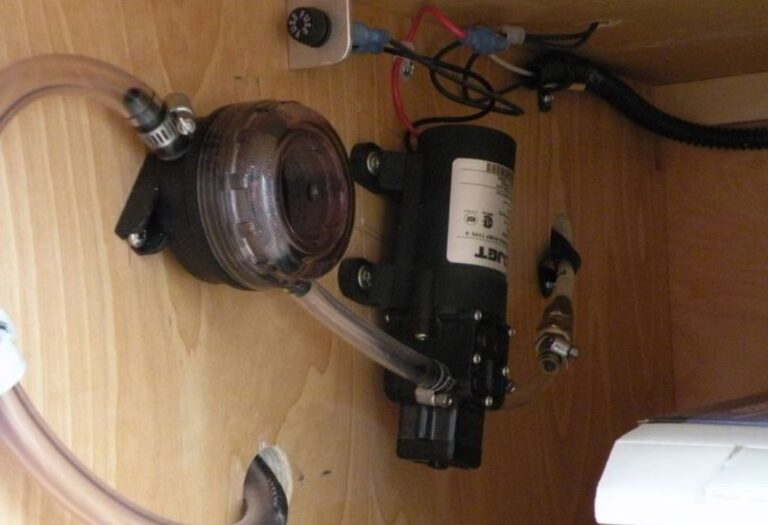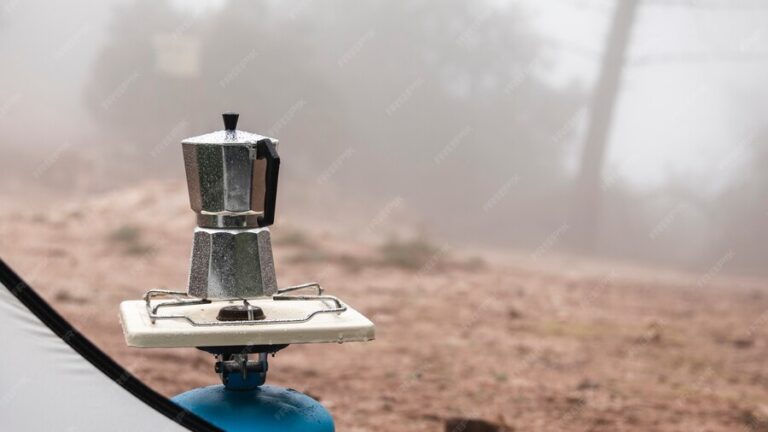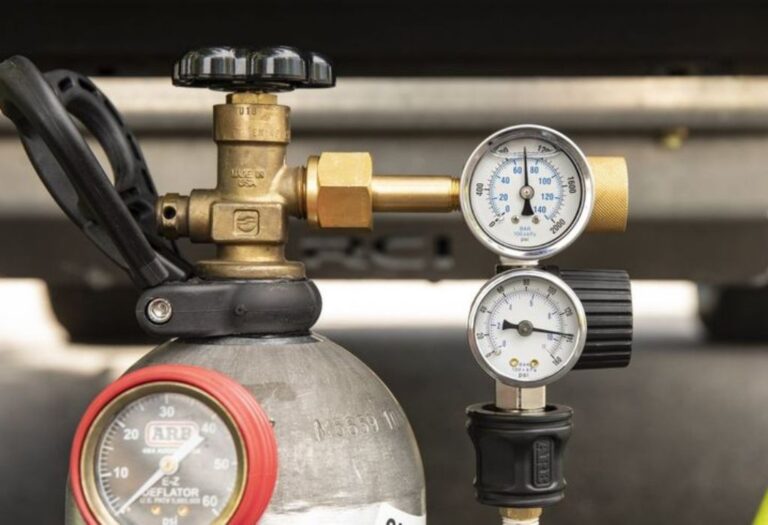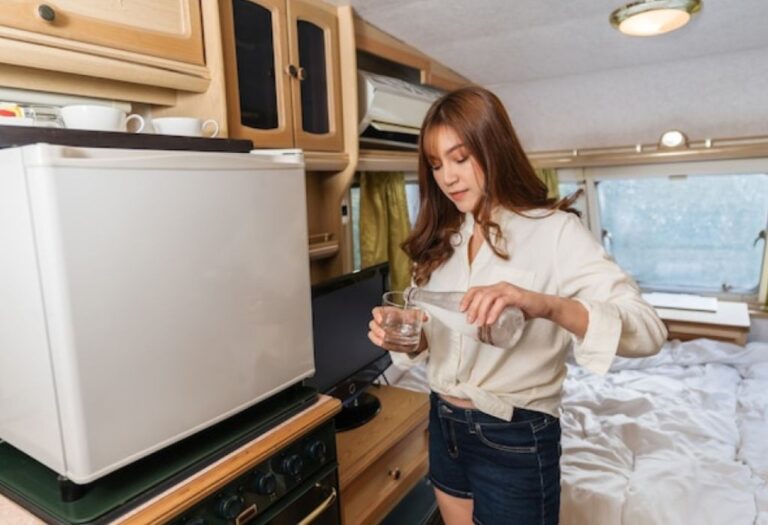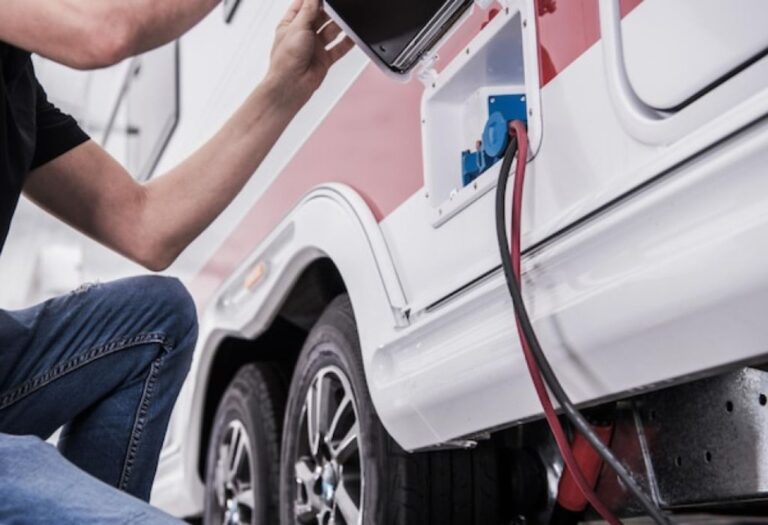How Long to Leave Vinegar in an RV Water Heater? Guide
If you’ve ever noticed reduced water flow, strange odors, or unusual discoloration in your RV plumbing, your water heater might be suffering from mineral buildup. Hard water deposits like calcium and magnesium accumulate over time, reducing efficiency and potentially causing damage.
A simple and natural solution for descaling your RV water heater is white vinegar. Vinegar’s mild acidity effectively dissolves mineral buildup without harming the tank, hoses, or plumbing. But a common question among RVers is: “How long should I leave vinegar in an RV water heater?”
In this guide, we’ll walk you through why cleaning matters, how vinegar works, the proper soaking time, and step-by-step instructions to keep your RV water heater running efficiently and odor-free. Whether you’re a first-time RVer or a seasoned traveler, following these tips will extend your water heater’s life and improve your onboard water quality.
Why Cleaning an RV Water Heater Is Important

Maintaining a clean RV water heater is crucial for efficiency, safety, and water quality. Over time, mineral deposits from hard water — primarily calcium and magnesium — accumulate inside the tank. This buildup, often called scale, can create several problems:
- Reduced heating efficiency: Thick mineral layers act as insulation, making the heating element work harder and increasing energy use.
- Clogged pipes and reduced flow: Scale can restrict water movement, leading to uneven hot water or slow faucet flow.
- Unpleasant odors and discoloration: Minerals react with water, creating cloudy water, strange smells, or a metallic taste.
- Potential damage or leaks: Left unchecked, heavy deposits can cause corrosion, rust, or even rupture over time.
Regular cleaning not only improves water quality but extends the lifespan of your RV water heater and ensures reliable performance during trips. Using a natural solution like vinegar is safe, inexpensive, and effective for routine maintenance.
How Vinegar Works in Descaling
White vinegar contains acetic acid, which naturally dissolves minerals like calcium and magnesium without harming the tank. Unlike harsh chemical cleaners, vinegar is safe for aluminum, stainless steel, and coated tanks, making it ideal for RV water heaters.
Mechanism of Action:
- The acetic acid reacts with mineral deposits, breaking them down and loosening scale.
- Vinegar also helps neutralize odors by eliminating compounds that produce a metallic or “rotten egg” smell.
- It’s non-toxic, eco-friendly, and safe for your RV plumbing system when used correctly.
While vinegar is mild, it’s surprisingly effective at removing several months or even years of mineral accumulation, especially when combined with proper soaking and flushing techniques.
Step-by-Step Guide to Using Vinegar in Your RV Water Heater
Cleaning your RV water heater with vinegar is straightforward if you follow these steps:
1. Turn Off Power and Water
- Disconnect your RV from electricity or turn off the water heater’s power source.
- Shut off the water supply to prevent accidental flooding.
2. Drain the Tank
- Open the tank’s drain valve and let all water flow out.
- Remove a pressure relief valve if necessary to allow air in and speed up draining.
3. Pour in Vinegar
- Add white distilled vinegar to the tank. The amount depends on your tank’s capacity — typically 1–2 gallons for a 6–10 gallon RV tank.
- Some RVers use a funnel and flexible hose for easier pouring.
4. Recirculate or Let Soak
- You can circulate vinegar through the tank using a pump or let it sit in the tank undisturbed.
- Ensure all surfaces coated with scale are exposed to the vinegar.
5. Safety Precautions
- Do not mix vinegar with bleach or other chemicals.
- Wear gloves and avoid skin contact with concentrated vinegar.
How Long to Leave Vinegar in the RV Water Heater
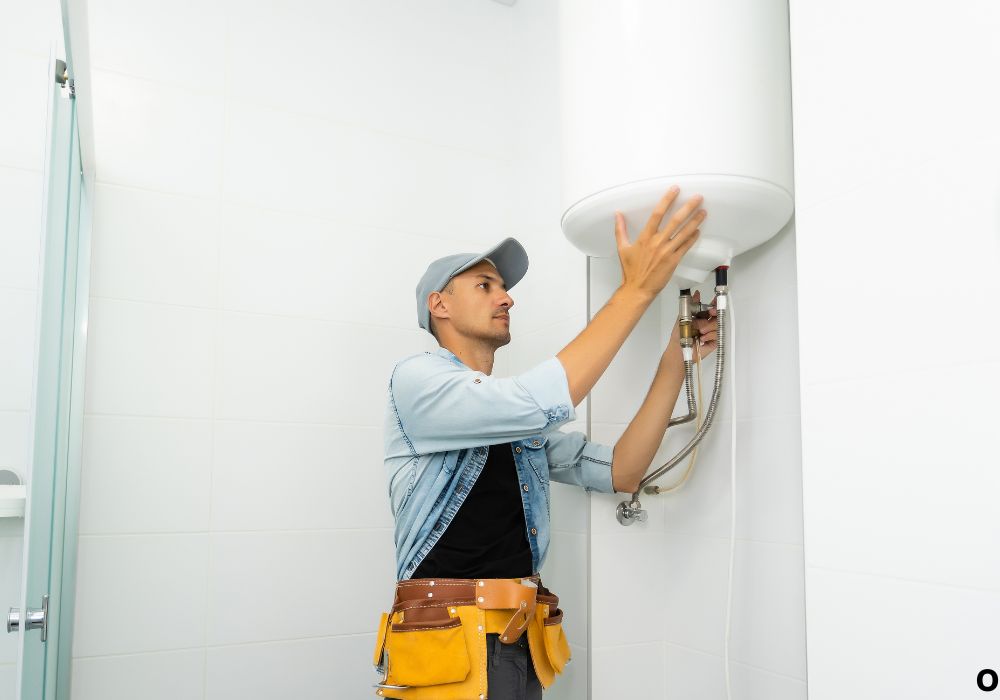
The soaking time is key for effective descaling:
- Light buildup: 2–3 hours is usually sufficient to loosen minor scale.
- Moderate buildup: 4–6 hours may be required for deposits that have accumulated over months.
- Heavy buildup or neglected tank: Overnight soaking (8–12 hours) can help break down stubborn deposits.
Tips:
- Check periodically by inspecting a drain opening or using a small camera if available.
- Extended soaking is generally safe with vinegar, as its mild acidity does not damage the tank.
- Avoid leaving vinegar for several days, as it may cause odor or require extra flushing.
Flushing and Rinsing the Tank After Vinegar
After soaking, it’s essential to flush out the vinegar to prevent residual taste and ensure safe drinking water:
- Open the drain valve and allow vinegar to flow out completely.
- Refill the tank with fresh water and drain again to rinse remaining vinegar.
- Repeat until water tastes neutral and has no strong vinegar smell.
- Close valves, reconnect power, and allow the tank to refill completely.
Flushing is critical, as leftover vinegar can produce an unpleasant taste or odor when using the RV water system.
Safety Tips When Using Vinegar in RV Water Heaters
- Ventilate the area while draining and filling to avoid strong vinegar fumes.
- Use gloves and eye protection when handling vinegar.
- Do not heat the tank while vinegar is inside; allow the liquid to remain cold or lukewarm during soaking.
- Never mix vinegar with bleach, as this creates toxic chlorine gas.
How Often Should You Clean an RV Water Heater?
- Regular maintenance: Once per year is sufficient for most travelers using moderately hard water.
- Hard water areas: May require twice yearly cleaning to prevent heavy scale.
- Signs it’s time: Reduced water flow, strange odors, discoloration, or longer heating times.
Consistent maintenance ensures optimal water quality and prolongs the life of your RV water heater.
Common Mistakes to Avoid
- Leaving vinegar too short: Minor scale may not dissolve, requiring repeat treatment.
- Leaving vinegar too long: Generally safe, but extended periods over 24 hours may lead to strong odor that takes extra flushing to remove.
- Not flushing properly: Residual vinegar can taste strong or affect appliances.
- Mixing with other chemicals: Can cause dangerous reactions.
- Skipping protective equipment: Gloves and eye protection help avoid irritation.
Frequently Asked Questions (FAQs)
How long should vinegar sit in an RV water heater?
For light to moderate mineral buildup, 2–6 hours is usually sufficient. For heavy deposits or neglected tanks, leaving vinegar overnight can help dissolve stubborn scale.
Can I leave vinegar in my tank overnight?
Yes, leaving vinegar overnight is generally safe for the tank, but be sure to flush thoroughly afterward to remove the odor and any remaining acidity.
Do I need to drain the tank before adding vinegar?
Yes, draining the tank ensures the vinegar contacts all surfaces and works effectively to remove mineral buildup.
Can vinegar damage the RV water heater?
No, white distilled vinegar is mild and safe for metal, aluminum, or coated tanks when used correctly. It won’t harm your plumbing system.
How often should I descale with vinegar?
Once per year is adequate for most RVs. In areas with hard water, cleaning twice per year may be necessary to prevent heavy scale accumulation.
Can I mix vinegar with bleach for cleaning?
Absolutely not. Mixing vinegar with bleach produces toxic chlorine gas, which is dangerous to breathe and can damage your RV plumbing.
How do I flush the vinegar out of my tank?
Refill the tank with fresh water and drain it completely. Repeat until the water tastes neutral and the vinegar odor is gone.
Can I use hot water while vinegar is in the tank?
No. Keep the water cold or lukewarm during the soaking period. Using hot water can accelerate the release of vinegar fumes and create safety hazards.
Will vinegar remove all mineral deposits?
Vinegar effectively removes most calcium and magnesium scale, but very heavy or long-standing buildup may require longer soaking or repeated treatment.
Is vinegar better than commercial descalers?
Vinegar is safe, inexpensive, and eco-friendly for routine maintenance. Commercial descalers may work faster on extreme buildup but are often harsher and more expensive.
Conclusion: Keep Your RV Water Heater Clean and Efficient
Cleaning your RV water heater with vinegar is a safe, effective, and eco-friendly method to remove mineral buildup, improve water taste, and extend the tank’s lifespan. The key is knowing how long to leave vinegar in the tank — generally 2–6 hours for typical buildup, or overnight for heavy deposits.
Following proper draining, soaking, and flushing steps ensures your RV water heater stays in top condition, providing clean, safe, and odor-free water for drinking, cooking, and bathing on every trip. Regular maintenance protects both your plumbing system and your health, making vinegar an invaluable ally for RV enthusiasts.
I’m David R. Coleman, the founder, lead writer, and lifelong tool enthusiast behind GarageToolPro.com. With years of experience in automotive repair, woodworking, and home DIY projects, I created this platform to share practical tips, detailed tool reviews, and step-by-step guides that help mechanics, hobbyists, and homeowners get the job done right the first time.

